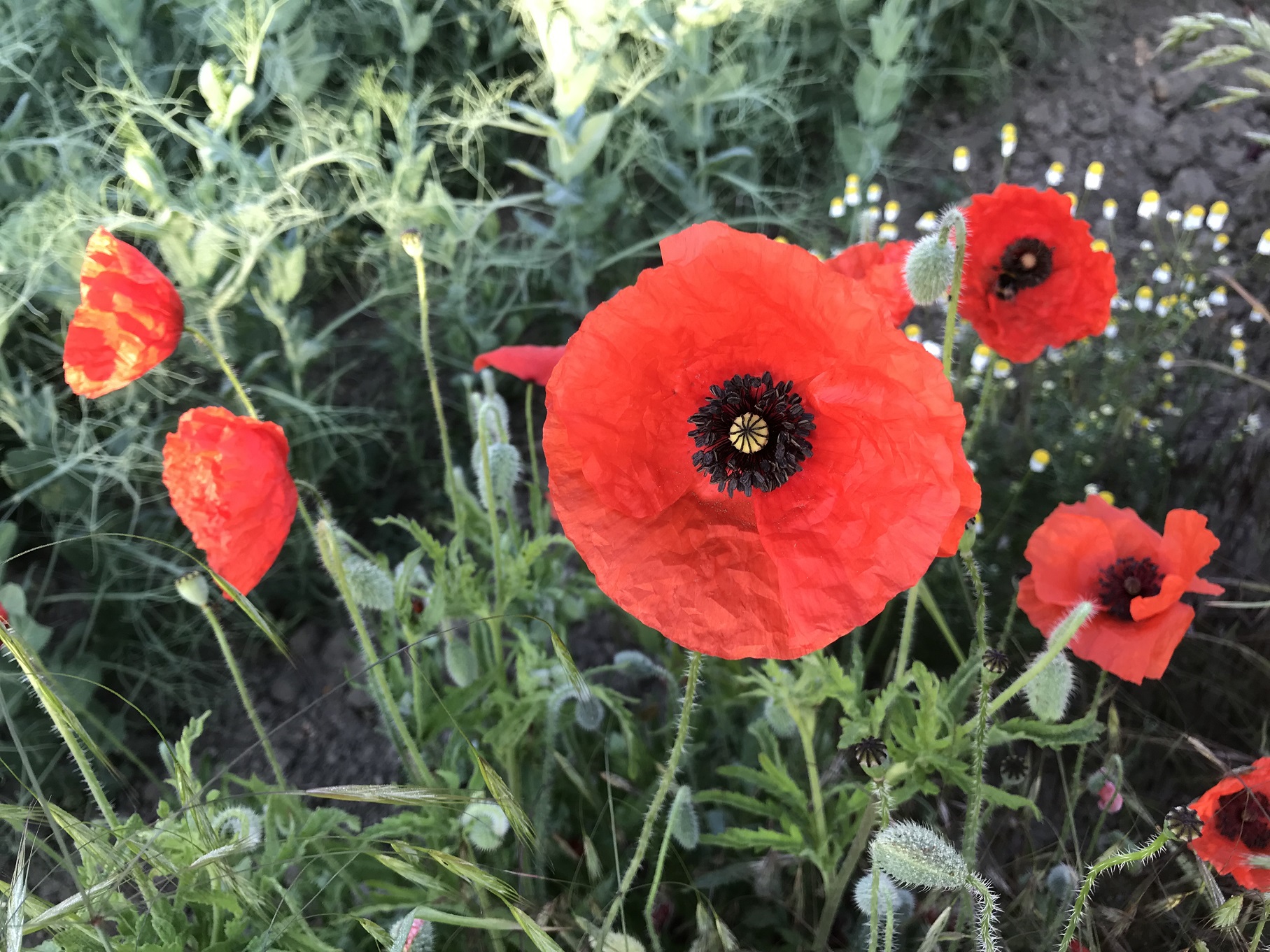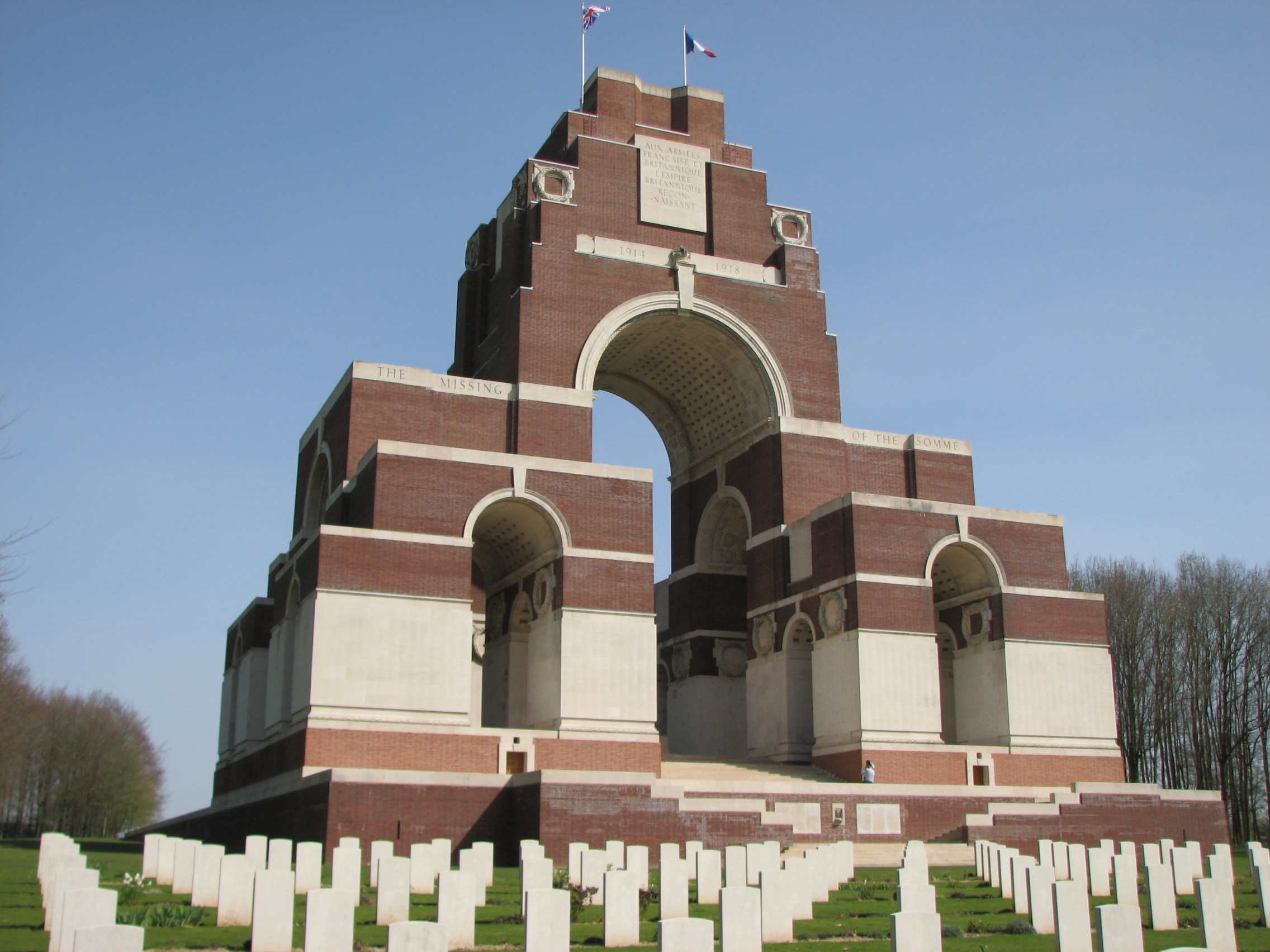Richard Wood (1889 - 1916)
Brother of Geoffrey Wood and Robert Wood. A career soldier, Richard was sent to France in September 1914. Awarded the Military Cross in 1916, at the time of his death Richard was the Commanding Officer of the 2nd Battalion of the York and Lancaster Regiment.
- 68
- Died in the Great War
- 51.970394, 1.017405
Details
| Name: | Richard Poingdestre Wood |
| Service: | British Army |
| Unit: | 2nd Battalion, York and Lancaster Regiment |
| Rank: | Lieutenant Colonel |
| Decoration(s): | Military Cross |
| Date of Death: | 9th October 1916 |
| Age: | 26 |
| Commemorated: | Face B of Pier 14, Thiepval Memorial, near Albert, France |
Family Background and Early Life
Richard Wood was born on 9th November 1889, at Melways, 3a Greencraft Gardens, in Hampstead, London. Richard’s father, Ernest was the third son of John and Francis Wood, of Melton Hall near Woodbridge, and a Solicitor by profession. Ernest had married Katherine Grace Poingdestre from London in 1888.
Ernest and Grace would have 6 children, all sons, Richard being the eldest. Like most children of his class, Richard was privately educated at boarding school. Initially he went to Eaton House which was a Preparatory Boarding School at Aldeburgh, in Suffolk, and later attended Cheltenham College between 1903 and 1908.
Before leaving Cheltenham College, Richard was intent on pursuing a career in the Army. This was not unusual for a man of his social status, and his father’s younger brother John Ironside Wood was at that time a Captain in the Border Regiment. He attended the Royal Military College at Sandhurst in 1908 and 1909.
Joins the Army
Graduating from Sandhurst, Richard was commissioned as a Second Lieutenant in the York and Lancaster Regiment on 6th November 1909. Shortly afterwards he was posted to their 1st Battalion stationed at Karachi, India.
After two years he was seconded for service in the West African Frontier Force. This was the name of the British colonial military forces, in the colonies of Nigeria, Gold Coast, Sierra Leone and Gambia, with many of the men having been recruited from those areas.
Richard’s parents left London, and moved to the White House on Rectory Hill, East Bergholt at some point between 1901 and 1906. 1 Ernest and Katherine renamed the property Melton Cottage. It has since reverted to its original name. Richard – by then a Lieutenant – was home on leave at the outbreak of war in August 1914. He immediately applied for permission to join another battalion of his regiment, which was then under orders to go to France as part of the newly formed British Expeditionary Force (B.E.F.).
France
Richard’s efforts were successful and he was posted to the Yorks and Lancs 2nd Battalion, sailing for France with them on 9th September, and disembarking at St. Nazaire that same evening.
After a short spell on the Aisne in late September, the Battalion took part in what is now called the Race to the Sea: This was essentially a series of attempts by both sides to turn the open (western) flank of the enemy: It ended in several battles during late October and early November 1914 (the best known being the First Battle of Ypres), and after which both sides faced each other in a relatively static, continuous line stretching from the North Sea to the Swiss border. This marked the start of trench warfare, which was to last until the spring of 1918.
On 23rd October 1914, whilst the 2nd Yorks and Lancs were positioned near Touquet (south of Armentieres), the Germans attacked. The Germans eventually retired but during the fighting Richard was wounded by a bullet in his right shoulder.
Richard was evacuated and just two days later he left Bolougne bound for Southampton. After being discharged from hospital, he appears to have spent most of his convalescent leave recovering from his wound at Melton Cottage.
Return to the Western Front
At the end of December, Richard was notified that he was now fit for duty, and consequently joined the Regiment’s Reserve Battalion at the start of 1915. Returning to France at the end of January, he re-joined the 2nd Battalion on 1st February.
The Battalion were by that time located at La Chapelle D’Armentieres. At the end of May, they left the Armentieres sector and moved north to the Ypres Salient, in Belgium. With the exception of a few periods of rest, they would remain in the Salient until July the following year.
In June 1915, Richard took command of the Battalion’s B Company, and was promoted to the rank of Captain shortly afterwards.
Ernest and Katherine were notified in October that their son Geoffrey, a Lieutenant in the 7th Battalion of the Suffolk Regiment, had been killed in action. 2 Geoffrey Dayrell Wood was killed on 13th October 1915, during the Battle of Loos, France, aged 24. He has no known grave, and is commemorated on the Loos Memorial to the Missing, near Lens, France.
Richard was Mentioned in Despatches on 1st January 1916, and at the end of May, it was announced that he was awarded the Military Cross. The citation for the medal states that it was “For consistent good work and coolness in action, notably on one occasion when sent to reinforce another battalion under heavy shell fire. He has done fine reconnaissance work under fire, and has uniformly set a fine example to those under him.”
The Battle of the Somme
The 2nd left the Ypres Salient at the end of July 1916, and proceeded south to where the massive Anglo – French offensive, which is now called the Battle of the Somme had been raging for a month. It was during the move south, that Richard was promoted to the rank of Major.
The 2nd Yorks and Lancs went into the line on the Somme on 11th September and for next two weeks were involved in the fighting near the villages of Guillemont and Ginchy.
The Battalion’s Commanding Officer was wounded in the fighting on 25th September, and Richard took over command, with the acting rank of Lieutenant Colonel.
The 2nd Yorks and Lancs were granted some relief when they came out of the line in late September. They returned to the trenches on the evening of 8th October, when they took over a portion of the line which was completely new to the Battalion, south-west of the village of Gueudecourt.
The Germans shelled the Battalion’s trenches heavily, and intermittent shelling continued during the evening of 9th October. That night, Richard left the Battalion’s headquarters to make a tour of the front line.
The enemy front line was only about 200 yards from the British front line. To make matters worse, it was a bright moonlit night, there were no communication trenches and all movement had to be made over the top. After visiting his men in the front line, Richard and his runner started to make their way back. Owing to the intense shell fire they lost their way and ended back at the front line – which in this section was held by a neighbouring battalion. “They were challenged by a Sergeant of this Regiment who directed them towards the officers dug-out, but they had not gone more than half a dozen yards” before Richard was shot by a German sniper. His runner carried him into the trench and helped to bandage him up, but Richard died very shortly afterwards. 3 Details and quotation taken from a letter dated 15th October 1916, written to Richard’s Father by Captaion John Horlington, who had taken over command of the Battalion, upon Richard’s death. (Reference 578-K/8/2/921, York and Lancaster Regimental Archive Collection; courtesy of the Rotherham Archives and Local Studies Service).
Richard was buried close to where he fell and the spot was marked with a cross.
Postscript
On the 13th October, the family received a telegram at Melton Cottage from the War Office. At the time, Ernest’s nephew was staying with the family at Melton Cottage. He later recounted:
“On the Friday after, again the telegraph boy visited Melton Cottage. He handed it to me. I scratched around for my courage and took it to my uncle. I can see him now. He was a solicitor, and a very precise man. He walked over to his desk, picked up the letter opener and slit open the envelope. As he did so, my dear, sweet aunt came into the room. They looked at each other; nothing was said, but I knew that their worst fears had been realised. Their beloved, brilliant, first-born son Richard had been killed when commanding his regiment at 27 years of age, one of the youngest C.O.’s in the Army. I shall never forget the look of anguish on the faces of my aunt and uncle.” 4 From an address given by Derek Ironside Wood in the church at Bures, on Remembrance Day, 1976, as quoted in the publication “Melton Hall – The house, the grounds and the people who lived there” by Colin de la Rue (publisher and date unknown).
The telegram stated “Deeply regret to inform you that Major RP Wood York and Lancaster Regt was killed in action 9th October. The Army Council express their sympathy.”
Just three days later, another telegram was delivered to Ernest and Katherine notifying them that their son Robert had been killed in action on 12th October. 5 2nd Lieutenant Robert Basil Wood was killed in action during a trench raid, near the village of Le Gheer, on the Franco-Belgian border, aged 23 years old. He is buried nearby in Tancrez Farm Cemetery, the only one of Ernest and Katherine’s sons who died in the Great War to have a known grave.
Another of Richard’s brothers, John Wood – or Jack as he was called – served as a Lieutenant in the Border Regiment. He was wounded, but survived the War. The Wood family had become the second family in East Bergholt to lose three sons in the Great War.
Ernest and Katherine erected two tablets in memory of their sons, on the South Wall of the Chancel in St. Mary’s Church. They sold Melton Cottage in 1925 and moved away from East Bergholt though Katherine returned to the village following Ernest’s death in 1938. She then lived at Commandree on Gaston Street until her own death in 1944.
Richard has no known grave and is commemorated on the Thiepval Memorial. This Memorial to the Missing of the Somme contains the names of over 72,000 officers and men of the United Kingdom and South African forces who died in the Somme sector before 20th March 1918, and have no known grave.
Copyright © Mark Ashmore, 2024
- 68
- Died in the Great War
- 51.970394, 1.017405




